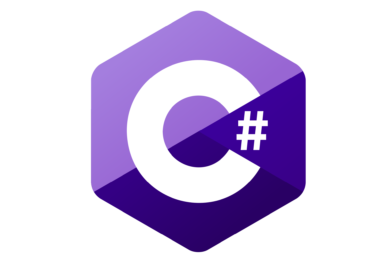IEnumerable and IEnumerator
IEnumerable is an interface defining a single method GetEnumerator() that returns an IEnumerator interface.
This works for readonly access to a collection that implements that IEnumerable can be used with a foreach statement.
IEnumerator has two methods MoveNext and Reset. It also has a property called Current
class Demo : IEnumerable, IEnumerator {
// IEnumerable method GetEnumerator()
IEnumerator IEnumerable.GetEnumerator() {
throw new NotImplementedException();
}
public object Current {
get { throw new NotImplementedException(); }
}
// IEnumertor method
public bool MoveNext() {
throw new NotImplementedException();
}
// IEnumertor method
public void Reset() {
throw new NotImplementedException();
}
}
List<T> collection
List<T> uses an array to store the elements. When the number of elements exceeds the size of the array, a new and larger array is allocated, and the content of the previous array is copied to the new one.
var numbers = new List<int> {1, 2, 3}; // 1 2 3
numbers.Add(5); // 1 2 3 5
numbers.AddRange(new int[] { 7, 11 }); // 1 2 3 5 7 11
numbers.Insert(5, 1); // 1 2 3 5 7 1 11
numbers.Insert(5, 1); // 1 2 3 5 7 1 1 11
numbers.InsertRange( // 1 13 17 19 2 3 5..
1, new int[] {13, 17, 19}); // ..7 1 1 11
numbers.Remove(1); // 13 17 19 2 3 5 7 1
// 1 11
numbers.RemoveRange(2, 3); // 13 17 5 7 1 1 11
numbers.RemoveAll(e => e < 10); // 13 17 11
numbers.RemoveAt(1); // 13 11
numbers.Clear(); // empty
var numbers = new List<int> { 1, 2, 3, 5, 7, 11 };
var a = numbers.Find(e => e < 10); // 1
var b = numbers.FindLast(e => e < 10); // 7
var c = numbers.FindAll(e => e < 10); // 1 2 3 5 7
var numbers = new List<int> { 1, 1, 2, 3, 5, 8, 11 };
var a = numbers.FindIndex(e => e < 10); // 0
var b = numbers.FindLastIndex(e => e < 10); // 5
var c = numbers.IndexOf(5); // 4
var d = numbers.LastIndexOf(1); // 1
var e = numbers.BinarySearch(8); // 5
var numbers = new List<int> { 1, 5, 3, 11, 8, 1, 2 };
numbers.Sort(); // 1 1 2 3 5 8 11
numbers.Reverse(); // 11 8 5 3 2 1 1Sort() sorts the list according to a default or specified criteria. There are several overloads that allow us to specify either a comparison delegate or an IComparer<T> object, or even a sub-range of the list to sort. This operation is performed in O(n log n) in most cases but O (n2) in the worst-case scenario.
The Dictionary<TKey, TValue> collection
var languages = new Dictionary<int, string>()
{
{1, "C#"},
{2, "Java"},
{3, "Python"},
{4, "C++"}
};
languages.Add(5, "JavaScript");
languages.TryAdd(5, "JavaScript");
languages[6] = "F#";
languages[5] = "TypeScript";
Console.WriteLine($"Has 5: {languages.ContainsKey(5)}");
Console.WriteLine($"Has C#: {languages.ContainsValue("C#")}");We can also iterate through the elements of a dictionary using an enumerator, in which case the key-value pairs are retrieved as KeyValuePair<TKey, TValue> objects:
foreach(var kvp in languages)
{
Console.WriteLine($"[{kvp.Key}] = {kvp.Value}");
}LINQ
class A : IComparable
{
public int value{get;private set;}
public A(int v)=>this.value = v;
public int CompareTo(object obj) => this.value - (obj as A).value;
}
List<A> values2 = new List<A> { new A(v:34), new A(v: 45), new A(v: 76), new A(v: 23), new A(v: 54), new A(v: 33), new A(v: 65),new A(v:33), new A(v:23) };
var res = from x in values2 where x.value>50 orderby x ascending select x;
foreach(A v in res){ Console.WriteLine(v.value);}
var res = from x in values2 group x by x.value into gg where gg.Key>30 orderby gg.Key ascending select gg.Key ;
foreach(var v in res){ Console.WriteLine(v);}//33,34,45.....int[] arr=new int[]{1,23,21,4,34,21,44,2,31,53,21,123};
var res323=arr.TakeLast(3).OrderBy(x=>x).Distinct().Zip( arr.TakeLast(3), (x,y)=>(x,y));
foreach (var (x,y) in res323)
{
Console.WriteLine(x+" "+y);
}
